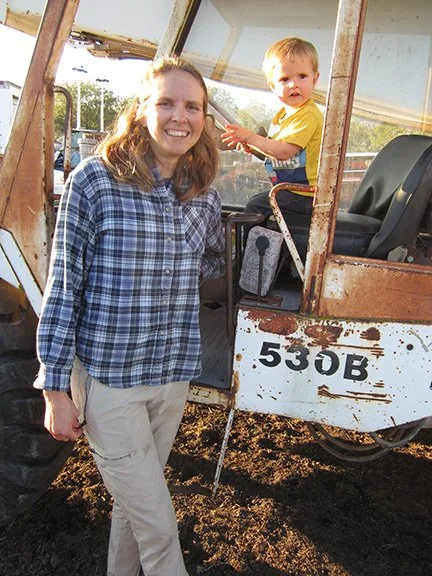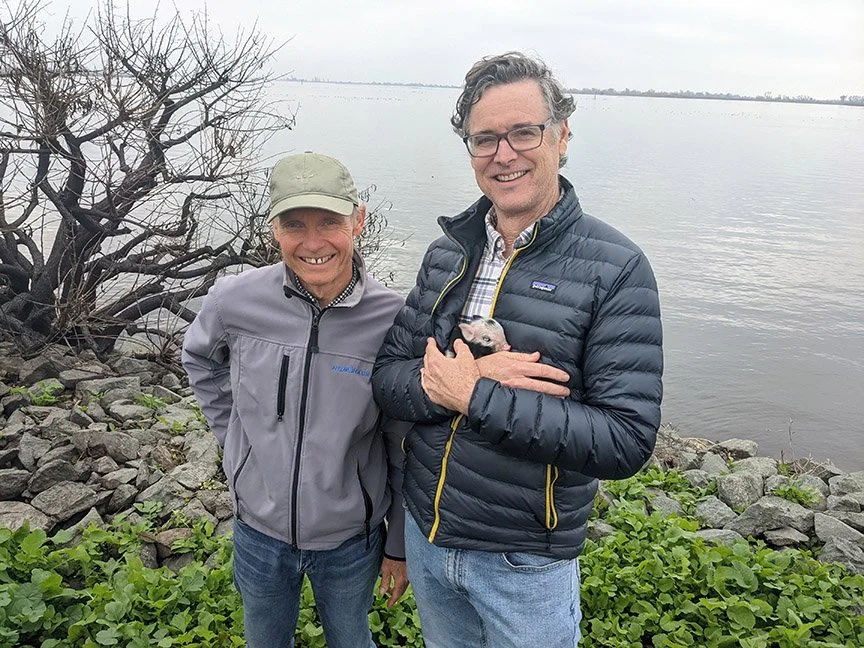Education, Studies and Partnerships
We've been working with state agencies and top scientists to develop grazing methods to control invasive weeds, fire risk, and sequester carbon. We have a 75 acre island 4 miles away in Contra Costa county and a grazing agreement on neighboring land. If things go well there's no limit to how much land we could be managing. After stopping the recent fire, these grass eating pigs are local heroes.
A boatload of biologists came to see our grass eating pigs eating water hyacinth.
Including Dr. Laurel Larsen, Chief Scientist of the Delta Stewardship Council which is the top state agency regulating the delta.
Also, Dr. Ariane Ortiz of UC Berkeley and USGS and Nik
Bertulis, an expert on traditional Mexican marsh agriculture. Hopefully they'll put some of our pigs on one of their well instrumented test plots to measure
the benefits. One of their locations is choked by dead thatch which limits plant growth. Pigs are magic for dealing with that. The models used in the carbon payments are plant-only systems and the growth stops before the king tide level. With grazing animals you can transition into a prairie or forest soil formation process which can continue to any thickness. Especially with pigs who are fanatically fond of eating invasive water weeds. Give them access to places where the weeds drift up, they carry those nutrients inland for soil formation where it's needed.
www.marincarbonproject.org is a good place to look for pasture carbon sequestration/soilbuilding.
We are also working with Dr. Steven Deverel and Campbell Ingram, Executive Officer of the Sacramento-San Joaquin Delta Conservancy to quantify our carbon sequestration/ land subsidence prevention. Flooding land is their main tool at the moment. Oxygen moves much more slowly in saturated ground so oxidation/subsidence is reduced.
Payments for flooding ground are approaching cropland rent prices.





